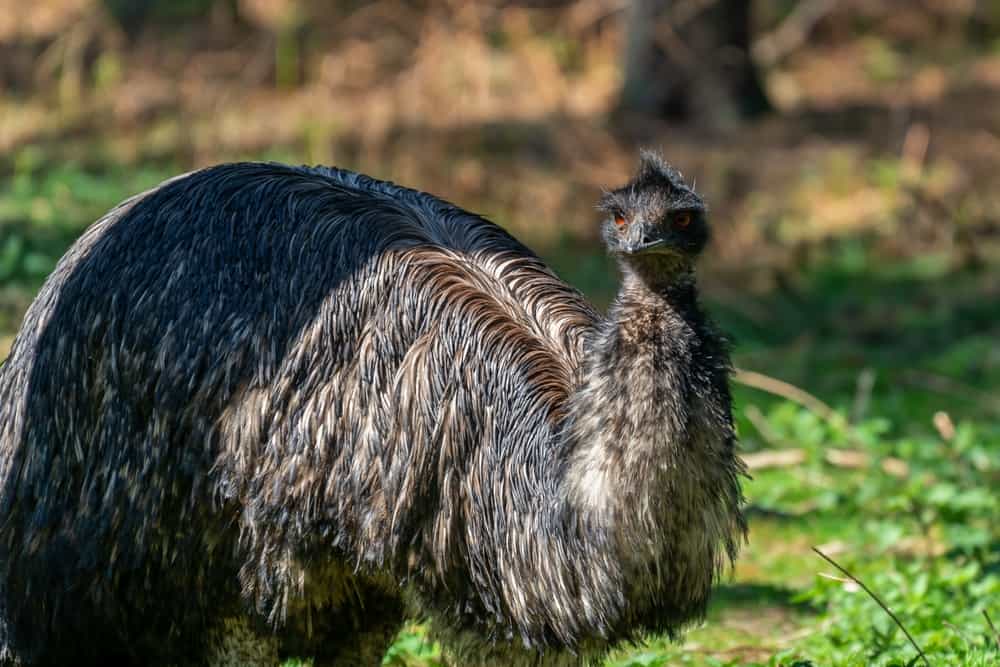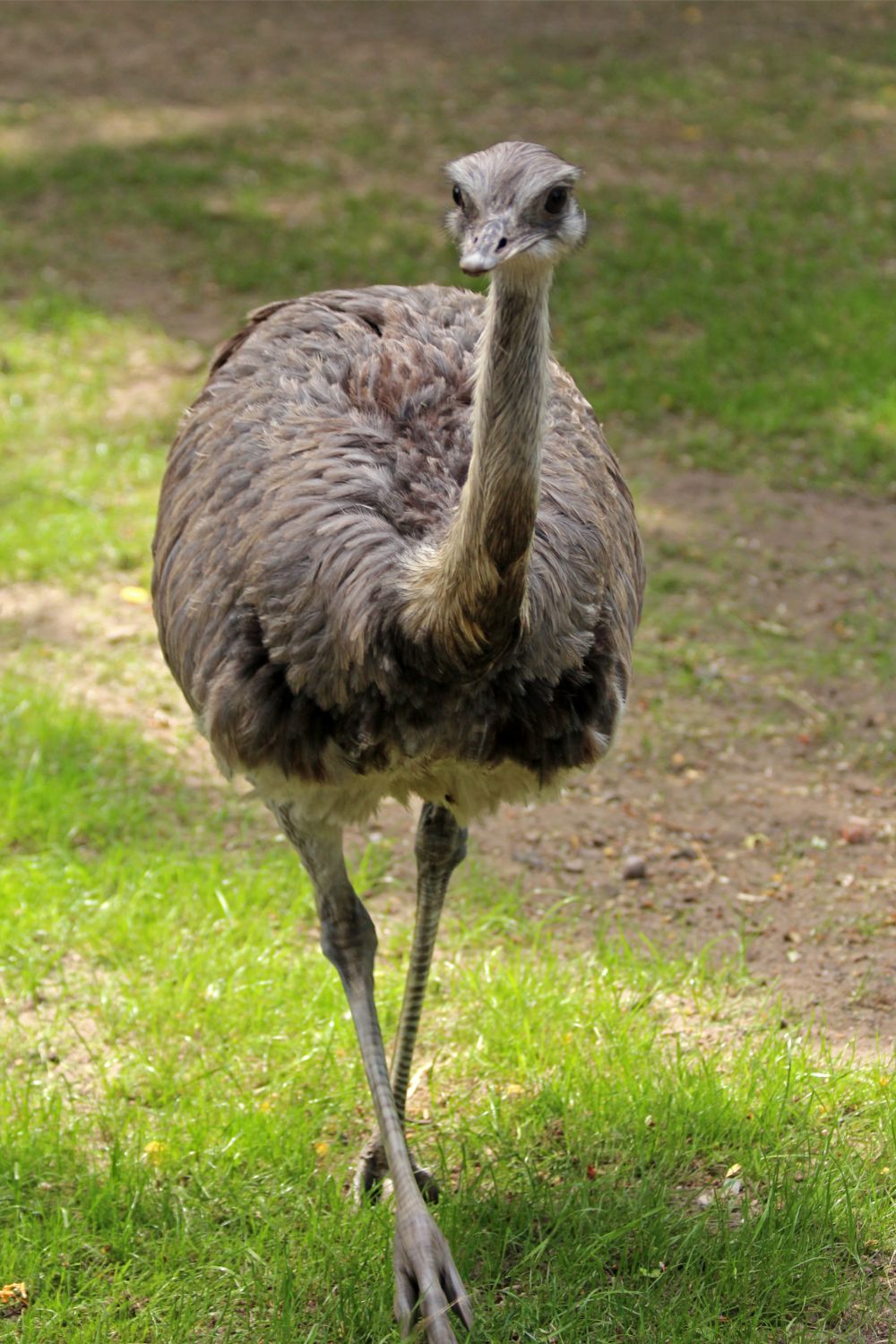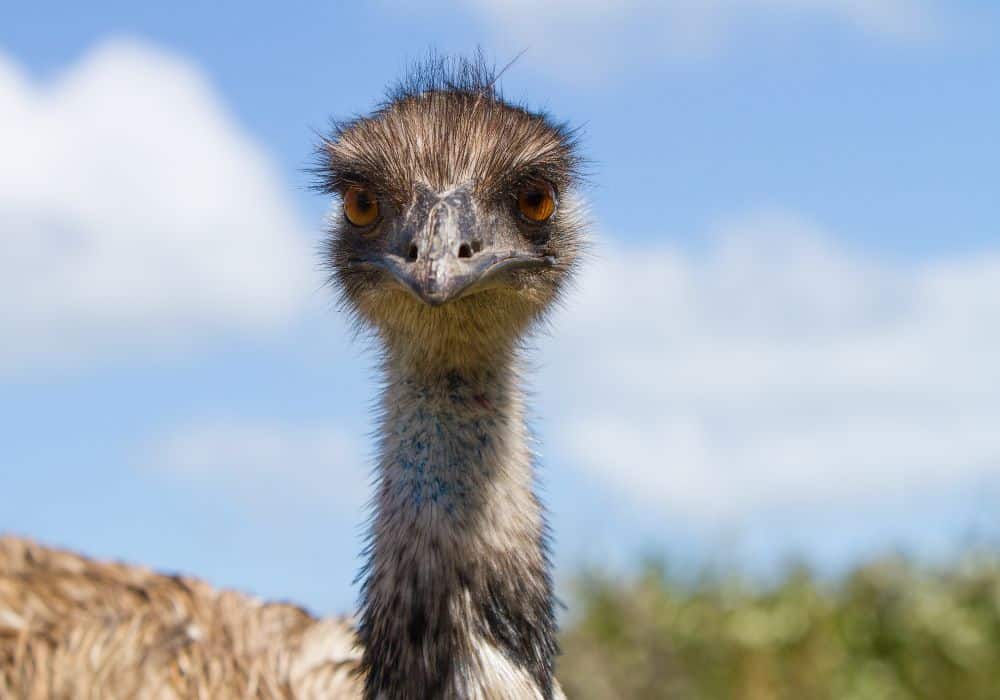Emus are the second largest birds in the world and a fascinating species. Because I only found them in the wild in Australia and rarely kept in captivity, many people know little about these giant, fast-running birds. In the wild, they may sometimes have to travel long distances for food, but what do emus eat?
Read on to find an answer to the above question. We will also answer questions such as how often do emus eat, what predators do they have, and can emus be dangerous to people?
Facts about emus
Emu belongs to the group of flightless birds. Their bodies are too big and their wings, which are only about 20 cm long, are too small for flying. Instead of flying, they run fast. Emus can run as fast as 50 kilometers per hour. Here is a video of some emus running in the wild.
Characteristics
Emus are the second largest bird after ostriches. They can reach up to 190 cm tall and weigh 55 kg. They have bare skin around their face and neck which is blue-black. Emu chicks have black or brown stripes that help them camouflage from predators. As they grow, the plumage becomes shaggy and turns grey-brown.
Emus do not tweet. Instead, they make very low-pitched sounds, including deep rolling grunts and thumping or booming notes. The sound can be heard up to two kilometers away. They can occasionally be heard calling at night. To hear what an emu call sounds like, watch this video from Animal Sounds.
Where do emus live?
The only place where you can see wild emus is in Australia where they live on most of the mainland. Wild emus also used to inhabit Tasmania, but they were hunted to extinction by the early Europeans who arrived there. Recently, they have been reintroduced to Tasmania.
Emus prefer living on the open plains but they can also inhabit snowfields, forests, and savannahs. They are not usually found in rainforests of dry regions and they avoid highly populated areas.
There are about 625,000 to 725,000 wild emus in Australia. Elsewhere they are farmed for their meat, leather, and oil, which is rich in omega-3, omega-6, and omega-9 fatty acids.
To learn more about emus, visit Bush Heritage.
What do emus eat?
Emus are foragers and omnivores, which means they eat both meat and plants. They also eat stones and we will explain shortly why, but first, let’s look at their less surprising diet.
Because emus have quite a high demand for protein (15%-20% of their diet). Because insects and arthropods are rich in protein, emus will eat almost any non-poisonous insect or arthropods they can find.
Other than meat, acacia, casuarina, and various grasses make up most of the emus’ plant diet. However, since the plants they can find varies depending on their habitat, they have been recorded to forage 43 different species that include seeds, fruits, and shoots.
Even though emus prefer to eat a lot to keep their energy up, they can go through starvation periods that can last for weeks. During times of drought, when there is scarce food, emus can lose up to 50% of their body weight while they travel hundreds of miles looking for water and food.
Food groups emus eat
- Arthropods and insects
This is the main source of protein for emus and it helps them to stay strong and develop stronger bones. Some insects emus like to eat include ants, beetles, caterpillars, grasshoppers, cockroaches, flies, and various larvae.
From the arthropods family, they will eat centipedes, scorpions, millipedes, and spiders. They will also eat fish that belong to the arthropods such as shellfish.
- Reptiles and mammals
Yes, emus will supplement their diet with baby reptiles and mammals such as rodents. They prefer insects and plant food but will eat anything available. Lizards are the easiest prey in this group because they don’t have parental protection.
- Plants
Most of the time, the emus have an abundance of plants to eat except during drought when they might have to travel long distances in search of plants. They will eat seeds, fruits, fresh herbs, young shoots, and vegetables. They also like to eat the leaves from plants.
Their favorites to eat are Casuarina, a tree with slender, drooping twigs that bear tiny scale-like leaves, and acacia plants. Their preferred fruits include apricots and apples, and berries such as cherries and strawberries.
- Grasses
Emus will not eat dry grass with low nutritional value. Instead, they will look for fresh grass. Eating grass gives emus a boost of energy and strengthens their gizzards (the hind part of the bird’s stomach that is used for grinding food).
To learn about what baby emus eat and how the emu’s diet changes during different seasons, visit Bird Fact.
What do captive emus at different ages eat?
The Feeding Nature website advises that when emus are aged 0-8 weeks, they should be allowed to eat as much as they one. In captivity, they should be fed a nutritionally balanced feed several times per day. At this stage, they will need to eat about 1 kg per day.
After eight weeks and up to about 14 months, the chicks can be given food with higher protein content. They won’t need as much as the younger chicks, and will typically consume less than a kilo in feed.
As the chicks get older, they can be allowed to graze on natural fields where they will access a similar diet as in the wild. They will also require less feed because they can get what they need more foraging the fields.
If you keep emus and notice them not eating much during the breeding season, this is nothing to worry about. It is normal for them to eat less than ½ kg per day during that time. Male emus that are brooding over the eggs will not consume any food or water during the entire incubation period.
Why do emus eat stones?
Emus, just like other birds and animals that have gizzards, need to eat stones and large pebbles because they help with their digestion. A gizzard is a muscular organ that grinds down the foods using stones, especially important when the emu’s diet includes hard-to-digest plants.
They can eat stones that weigh up to 45 grams and can hold over 700 grams of stones in their gizzards at one time. Captive emus have been known to eat other non-edible items too, including nuts and bolts, jewelry, and marbles.
How often and how much do they eat?
If emus have gone through a period of starvation, they will gorge themselves for many days to fill up their fat reserves back up. They can accommodate large quantities of food because they have a specialized esophagus.
However, emus that are kept in captivity do not need to eat a lot since they don’t consume their reserves searching for food. If fed a diet of food pellets, an adult emu will need 500 -600 grams of food each day.
What predators do emus have?
Because they are such large birds, the adult emus only have a few natural predators, which include dingoes and wedge-tailed eagles. The eggs and chicks are more vulnerable to predators and can get eaten by wild dogs, pigs, eagles, snakes, and foxes.
Aside from animals that prey on emus, their main threat is habitat loss, getting run over, or otherwise killed by humans. Fences can interfere with the emus’ movement when searching for food and birds can get crushed when they are trapped by the fences.
Are emus dangerous to humans?
Captive emus are not known to be aggressive other than when female emus are in their breeding period. Normally, emus are docile in captivity.
In the wild, emus can be more dangerous if they feel threatened. They have sharp claws that can cause injuries. However, emus are unlikely to attack humans only if they are disturbed or frightened.
Whether you are near domestic or wild emus, keep an eye on its body language. When you see an emu stand very tall and fluff its feathers over the neck area, it might be a good idea to back away. It might also make hissing sounds.
Have emus attacked people?
There are some incidents when emus have attacked people, but most of them have occurred when an emu has been protecting its eggs or chicks. Sometimes they are because the emu has been provoked otherwise.
For example, when a man tried to ride an emu. The emu would not let the man climb on its back and attacked him with its claws.
You can find more information on whether emus are dangerous, including how to approach an emu on Wild Explained.
Conclusion
Emus are relatively cheap birds to keep in captivity because they require very little food, considering their size. In the wild, they can go through periods of starvation while traveling in search of food. Though emus are a calm bird species, it is still best to approach these giants of the bird kingdom with caution, especially in the wild.
We hope that we have covered all your questions about what emus eat. If any questions remain, you can write them in the comments section.


